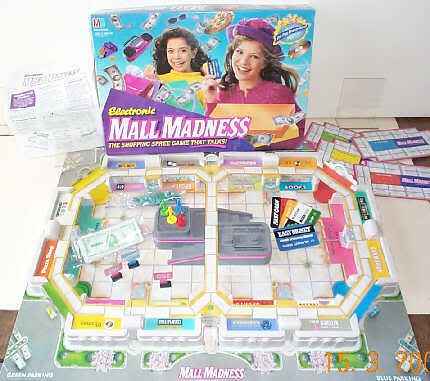
What's more quintessentially 90s than...the 80s? If this blog has taught you nothing, I hope that at least you can take away from it the notion that decade-later nostalgia is the most enjoyable kind. The memories practically beg to be retrieved; they're just bubbling below the surface, aching for sweet boiling-over reminiscence*. It's easier to laugh at ourselves when we're not quite so far removed, and not yet old and crotchety enough to scorn our former idealistic selves. In this particular case, Michael Jackson red-leather-jacket-and-one-glove-combo-wearing selves.
Sure, a 90s movie set in the 80s is chock full of jokes that practically script themselves. What's that? A lacy Madonna glove on the ingenue's comic foil hot friend**? A Flock of Seagulls haircut on an airport employee? Billy Idol? In minor retrospect, these things are hilarious for no reason other than that it's shameful that people sought to emulate these wardrobe-misguided people. However, the heart of the movie is not in its cheap shots at a decade crying out to be mocked relentlessly, it's in, well, its heart.
In the mid-90s, many of us knew Adam Sandler from Saturday Night Live*** or as the goofy overblown yell-prone star of his eponymous title character films Billy Madison and Happy Gilmore. This was most certainly before his Jim Carrey-esque "look-at-me-I'm-sort-of-artsy" phase (Punch-Drunk Love, Reign Over Me) but represented a shift away from the one-dimensional character caricatures, veering into I-can-make-a-joke-without-being-a-joke territory. Don't get me wrong, Sandler as Robbie Hart in The Wedding Singer was still prone to occasional bursts of humorous rage, but he also had a tad more in the humanity department.
So 90s children, spray on some Aquanet and hold onto your linebacker-esque shoulder pads; prepare to be spun right round.
(Be forewarned, YouTube was very generous on the Wedding Singer front, so I apologize for the clip-heavy post to those of you stuck at work.)
Robbie Hart was nebbish incarnate. As a former spandex-donning hair band front man, he has since fallen into a bout of suburban steady paychecks by means of his burgeoning career as a wedding singer. All is well in quiet Richland as Robbie is charming and professional, most notably when sidestepping the awkward drunken debauchery of Steve Buscemi. Really, is there anything he's not in? This guy is everywhere.
We get the the set up that Robbie is a kind and gentle soul from his fair exchange rate of old lady singing lessons for meatballs. Sounds fair to me. Who doesn't like meatballs? And deposited directly from stove-top to hand? Sign me up! Oh, and did I mention there's this hot chick who works as a waitress at these events? Because that comes in later too. Am I getting ahead of myself yet? This movie is more complicated than I remember. This is probably because I was 12 when I first saw it.
In typical melodramatic movie fashion, Robbie is tragically left at the altar by his personality-void fiancee, vapid Vicky. As most people did in the 80s when faced with a bout of unquenchable depression, Robbie turned to a strict music diet of The Cure. Dark, n'est-ce pas? He makes the fatal wedding singer mistake of playing "Love Stinks" at a wedding and is promptly booted out. All the people seated at the function's reject table certainly get a kick out of it, though.
During all this, Robbie bonds with the aforementioned catering waitress, Julia (Drew Barrymore) and promises to help her with her wedding despite all of the obvious and easily avoidable pain it may cause him. Otherwise seeking to dodge contact with nuptials, Robbie's struggling to make it work with bar mitzvah gigs.
For those of you not well-versed in Hebrew or Yiddish, I promise he says nothing in this song outside of "Mazel Tov!" and "L'Chaim!". The rest of them are largely just Semitic sounds. Aren't guttural language humorous? Ḥa ḥa ḥa ḥa!****
Julia eggs on Robbie to play her some of his new stuff (from the aforementioned Cure-rocking phase) and we are introduced to the following brilliant little ditty. Isn't is charming?
So, Julia. Yeah. Her fiancee is a Miami Vice-worshiping junk bonds trader named Glenn, I'm not sure you can get more 80s than that. He's also kind of a jerk. Okay, so he's a complete jerk and cheats on Julia all the time. And then he tells Robbie about it, which is a totally smooth move because Robbie and Julia are practically sporting broken half-heart BFF necklaces. Oh yes, and Glenn's last name is Goolia. Julia is to be Julia Goolia. Oh my god, rhyming! Language can be so humorous.
To avoid an incredibly lengthy post, I'll skip to the good parts. Imagine me as your helpful 90s VHS fast-forwarder, bringing you only things of value and weeding out the dreck. Blah, blah, blah, things go awry, hilarious kooky mishaps, misguided romantic escapades, yada yada yada....
Oh, and a rapping granny totally happens:
I love that lady, not just for this or her work in Wedding Crashers, but mainly because she was once on Golden Girls and thus deserves eternal unwavering reverence. It's in the Children of the 90s bylaws. Look it up.
So, the granny raps, and Julia decides to elope with her tool of a fiancee to Vegas to avoid any sort of confrontation with Robbie. With the help of Billy Idol (because really, who wouldn't welcome the help of Billy Idol in the face of a romantic scheme?) Robbie manages to accost her aisleside and serenade her:
All together now: awww. Wasn't that just obscenely heartwarming? Guys, if you're reading this, let me give you a hint. Cheesy moments from 90s movies have forever warped the expectations of any of your potential future mates. You better start brainstorming now some type of completely unrealistic over-the-top grand romantic gesture, because this is the way we've been told it's done.
The Wedding Singer is on TV every 12 minutes or so (I'm pretty sure they're using it calibrate satellite clocks) so its familiarity is comfortable like an old friend. Sure, it's not everyone's can of Tab, but even the harshest of critics have to warm at least slightly to its endearingness. It's everything a romantic comedy should be: watchable by both genders, is actually comical, and still has room for quiet blubbering toward the end. In step with good ol' simplified 90s sexism, if it can give a girl a good cry and a guy a good laugh, it's a winner.
*Sorry, I'm making tea, so maybe I'm mixing metaphors a tad here. I found this Mara brand tea and had to try it. Oh, products that indulge my narcissistic nature, how warm and comforting and sweet you are...okay, we're back at the tea metaphors here. I should probably put a lid on it. Alright, I swear, that was last one. Now I'm just mugging it for the footnote readers. Okay, okay. Teapot/teacup/tea references have subsided, and we can all go on with our days. Whew! I realize this humor isn't exactly everyone's cup of tea.
**You may know Christine Taylor as Ben Stiller's wife, but she'll always be Melody from Hey Dude to me.
***SNL Gap Girls, anyone?
****Please take a moment to appreciate that Ḥ is the Hebrew hard "ch" sound and it took me almost 10 minutes to locate that symbol by googling "h with a dot under it". You're welcome. These jokes don't come easy, folks.















